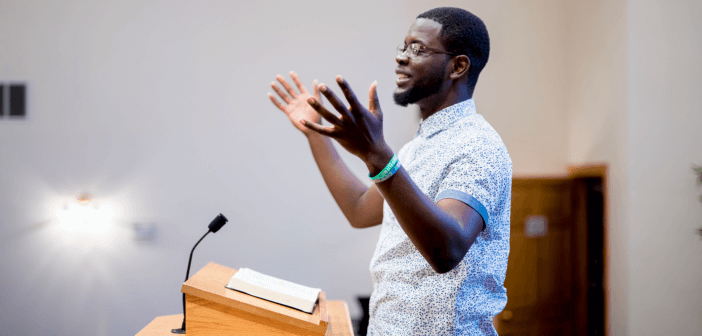How can a congregation help an incoming pastor from a different racial or cultural background lay the groundwork for successful ministry? The United Methodist General Commission on Religion and Race shares strategies and resources to help congregations and leaders in cross-cultural ministry partnerships begin on the right foot.
When preparing to receive a new pastor from a different racial or cultural background, congregational leaders must make concerted efforts to speak frankly about the social norms of the congregation, sharing that change may be necessary for all. The assumption or the unrealistic expectation that the clergy person will just “fit in” is self-centered and does not equate to being faithful Christ-followers.
1. Preparation
It is helpful to discuss and document concerns. To prepare for the success of the new pastor, congregational leaders should convene honest conversations within the congregation using the questions below.
- What are our sacred rhythms?
- What are our annual events and projects?
- What traditions do we hold in high regard?
- What changes might cause major conflict in the congregation?
- What will occur if there are any barriers to understanding language?
- How can there be honest conversation around language barriers? (Please know that the clergy person is aware and should not be reminded of this matter).
- What would it take for members of the congregation, especially leaders, to find resources in the new clergy persons’ native language to begin training the listening ear for a new dialect?
- What would it take to prepare to receive the Proclamation of the Gospel Message in different ways (i.e. through a translator, an outline of the sermon, or the distribution of the sermon manuscript)?
The leadership team and incoming pastor must have an honest conversation about the above questions to celebrate the diverse gifts and culture of the incoming pastor and think about any challenges that may arise. The core leadership team can begin sharing resources to the members of the congregation for how they can begin opening their hearts and minds to the new possibilities that will emerge from the cross racial or cross-cultural appointment.
Helpful resource can include:
2. Celebration
Plan a celebration recognizing the decision to receive a new pastor from a different racial or cultural background. The celebration should be done during a regularly scheduled worship experience.
Helpful resources can include:
3. Connection
When the new pastor arrives, it is imperative that congregational leaders coordinate means for relationship-building for the incoming the pastor and their family. This includes coordinating introductions at small groups, Sunday Schools, community gatherings, and informal settings with influencers. Additionally, if the church is in a smaller community, the congregation can begin broadly sharing information with others in the community about their new pastor and what it means to “welcome the stranger.” The responsibility for relationship building rests with the leaders of the congregation as the facilitators, not the incoming pastor who may not know the cultural norms or processes in the community.
Maintain a standard set of questions to ask the incoming pastor to get to know them. Please refrain from asking about “their vision for the church,” as these are not helpful during initial meetings and conversations. Questions could include:
- What is your “call” story?
- What have been your past vocational experiences?
- What brings you joy and sadness in ministry?
- What are your celebrations or reservations about this new ministry context?
4. Leadership covenant
When the core leaders and the new clergy person curate a brave space for leaders to address their fears and biases, it sets an expectation that the congregation is committed to discussing these in healthy ways. One helpful instrument is a Leadership Covenant outlining how the congregational leaders and the incoming pastor will lead together. The core leadership team of the congregation must ensure the Leadership Covenant is recited and referenced at each meeting as a reminder for how to be in relationship and service with one another.
5. Communication
When the appointment begins, the core leadership team and incoming pastor need to consider processes for establishing consistent communication with the congregation. For example, consider the question of how the new pastor would like to be addressed. Some might assume that calling a person by their first name is normal. However, to truly celebrate the full humanity and culture of the incoming pastor, it is necessary to invite them to share their response and respect their answer. It is the responsibility of the core leadership team or staff-pastor parish committee to communicate this information with the entire congregation.
The incoming pastor and core leadership can engage communication channels such as the worship bulletin, a newsletter announcement, or the church website. An announcement or insert example could be: “We have met with our new pastor, and these are some of the things you should know about him/her/them…”
This article is adapted from the Cross-Racial/Cross-Cultural Ministry Toolkit offered by the United Methodist General Commission on Religion and Race. Used by permission. Download the free Toolkit.
Related Resources
- 50 Ways to Welcome a New Pastor, a free Lewis Center Resource
- The Right Start: Beginning Ministry in a New Setting, a Lewis Center video took kit resource
- 13 Do’s & Don’ts for Incoming Cross-Racial and Cross-Cultural Pastors by the General Commission on Religion and Race
- When a Pastor Serves a Church of a Different Racial or Cultural Background by Jasmine Smothers







